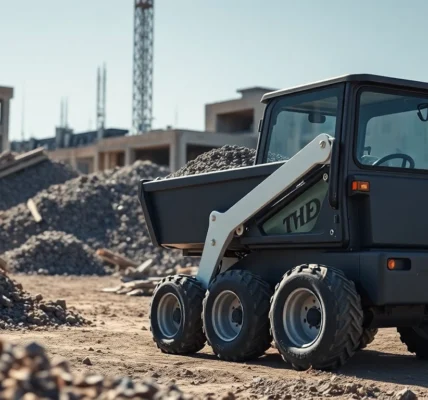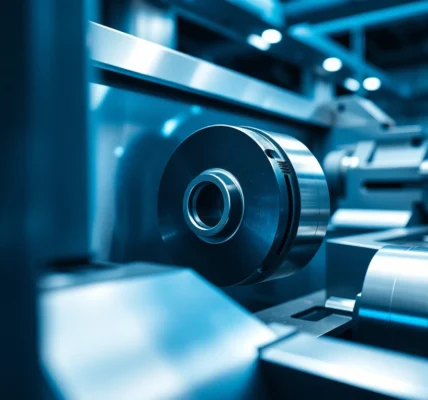Efficient Scissor Lift Rental Solutions for Construction and Industry Needs
Introduction to Scissor Lift Rental Services
In the modern construction, maintenance, and industrial sectors, working at height safely and efficiently is a fundamental requirement. Scissor lifts have become an indispensable piece of equipment, enabling workers to access elevated workspaces with stability and safety. As projects vary in scope and complexity, renting a scissor lift is often the most practical and cost-effective solution, eliminating the need for purchasing, storage, or maintenance of this specialized equipment. For businesses and contractors looking to optimize operational efficiency, scissor lift rental offers flexible, reliable access to a range of models tailored to different job requirements.
Understanding the Benefits of Renting Scissor Lifts
Opting for rental services over purchasing equipment delivers a multitude of advantages. Firstly, it provides access to modern, well-maintained machinery equipped with the latest safety features, thus reducing downtime and operational risks. Secondly, rentals are highly flexible; they can be scaled according to project size—ranging from short-term lifts for specific tasks to long-term hire agreements. Cost-wise, rental minimizes capital expenditure, breaks down expenses into predictable payments, and avoids the burden of depreciation and storage costs.
Furthermore, rental companies often include maintenance, repairs, and technical support, ensuring optimal performance and safety compliance throughout the hire period. For example, many providers now offer equipment that meets stringent UK safety standards, including modern electric models suitable for indoor work and rugged diesel variants for outdoor, rough terrain applications. Overall, rental models empower companies to stay agile, reduce overheads, and focus resources on core project activities.
Key Factors to Consider When Choosing a Rental Provider
Selecting a reputable rental provider is critical to project success. The first factor is safety and compliance; ensure the supplier adheres to industry safety standards such as the European EN 280 or UK’s LOLER regulations. Next, evaluate the range and availability of different models—electric, diesel, rough terrain, and narrow lifts—to match your project’s specific needs.
Additionally, consider logistical aspects such as delivery, setup, and pickup services. Reliable providers offer flexible scheduling, quick delivery, and responsive support to prevent delays. Customer service quality and technical support are equally important; a provider with knowledgeable staff can assist with equipment selection, operational training, and troubleshooting.
Finally, transparency in pricing, including all associated costs such as transportation, insurance, and setup fees, ensures budget accuracy and avoids unexpected expenses later. Conducting thorough background checks and reading customer reviews helps in choosing a partner who combines quality with cost-effectiveness.
Common Applications of Scissor Lifts in Various Industries
Scissor lifts are used across multiple sectors due to their versatility and safety profile. In construction, they facilitate tasks such as installing lighting, drywall, or window frames at elevated heights while ensuring stability. Maintenance projects, including building repairs or electrical installations, benefit from quick setup and precise positioning.
Manufacturing facilities utilize scissor lifts for scheduled maintenance, inventory handling, or machinery servicing at height. Retail outlets and warehouse environments employ these lifts for stock replenishment, lighting adjustments, and cleaning routines. Additionally, outdoor applications include landscaping, urban infrastructure, and event setup where durable diesel or rough terrain models are necessary.
Industries increasingly adopt electric scissor lifts for environmentally sensitive indoor environments, aligning with sustainability goals and minimizing carbon footprint. Their adaptability makes them a crucial asset for improving safety, productivity, and quality in high-access work tasks.
Types of Scissor Lifts Available for Hire
Electric vs. Diesel Scissor Lifts: Which Is Right for Your Project?
One of the fundamental aspects to consider is the power source. Electric scissor lifts are powered by batteries, offering quiet operation, zero emissions, and minimal maintenance—ideal for indoor projects, enclosed spaces, or areas with strict environmental regulations. Modern batteries provide long runtimes, with some models offering quick recharge options, ensuring uninterrupted work schedules.
Conversely, diesel scissor lifts are equipped with internal combustion engines, providing higher power and better performance on rough terrain. They excel outdoors, especially on uneven or rugged surfaces, where electric models might struggle. Diesel lifts are generally more robust, capable of handling heavier loads and longer operational hours, making them suitable for large-scale construction or outdoor maintenance tasks.
Choosing between electric and diesel models depends on factors like environment, terrain, noise restrictions, and project duration. Many rental providers offer hybrid options and versatile models to meet multiple needs, allowing clients to select equipment that aligns with their operational context.
Rough Terrain vs. Indoor Models: Selecting the Correct Equipment
Selection based on terrain is critical for safety and efficiency. Indoor models are typically compact, lightweight, and designed with narrow profiles for confined spaces, with features like self-leveling, zero-emission electric motors, and smooth maneuverability. They often include features such as non-marking tires to protect sensitive flooring.
Rough terrain scissor lifts are built to withstand outdoor elements, equipped with rugged tires, four-wheel drive, and higher ground clearance. These lifts are designed with reinforced chassis and stabilization systems, enabling safe operation on uneven surfaces, muddy grounds, or construction sites with obstacles.
Assessing your project site’s topography and environment enables proper equipment selection. Renting the right model minimizes operational risks and maximizes productivity, reducing the likelihood of equipment damage and work stoppages.
Features and Specifications to Look for in Your Rental
When choosing a scissor lift, consider vital features such as platform height, load capacity, mobility, and safety systems. High-quality lifts often include features like emergency lower functions, anti-slip platforms, guardrails, and fall-arrest attachments.
Specifications like platform extension, platform rotation, and control options (wireless or tethered) can enhance operational flexibility. The maximum working height should cover all anticipated tasks, with additional safety margins. Load capacity should be sufficient to support tools, materials, and personnel without overstressing the equipment.
Other considerations include battery life for electric models, fuel efficiency for diesel types, and the ease of maneuverability—such as 360-degree rotation or narrow aisle operation. Evaluating these features ensures seamless integration into your workflow and enhances overall safety and productivity.
How to Maximize Efficiency in Scissor Lift Rentals
Assessing Your Project’s Access Requirements
Determining the precise access needs is the first step toward an efficient rental process. Conduct detailed site surveys to measure height, reach, and space constraints. Consider obstacles such as overhead wires, doorways, uneven terrains, or confined spaces that may influence equipment choice.
Develop a clear plan that specifies the number of lifts needed, their positioning, duration of use, and safety considerations. Proper assessment ensures optimal utilization, prevents over- or under-scaling, and reduces rental costs.
Scheduling and Delivery Logistics
Coordinate with your rental supplier to schedule timely delivery, setup, and pickup. Early planning allows for contingency arrangements in case of delays or unforeseen site conditions. Many providers offer same-day or next-day delivery nationwide, increasing project flexibility.
Pre-arranging delivery windows minimizes site congestion, facilitates seamless integration into your workflow, and reduces downtime. Additionally, confirm the availability of trained operators or operator training, which enhances safety and operational efficiency.
Safety Tips and Best Practices for Operating Scissor Lifts
Worker safety is paramount. Ensure all operators are certified and familiar with manufacturer guidelines. Conduct pre-operation inspections, checking for damage, fluid levels, tire condition, and safety features before use.
Maintain stable footing, avoid sudden movements, and never override safety devices. Always utilize personal fall protection equipment when applicable. Regular training sessions, clear communication, and adherence to site safety protocols significantly reduce accidents and improve productivity.
Furthermore, establishing emergency procedures and ensuring safe load distribution can prevent tipping incidents and ensure efficient use of the equipment.
Cost Considerations and Budget Planning
Pricing Models forWeekly and Daily Rentals
Rental costs vary based on equipment type, duration, and supplier. Typically, daily rates are higher on a per-day basis but can be cost-effective for short-term needs, while weekly rates provide savings for extended projects. For example, electric scissor lifts may range from approximately £140 to £200 per week, with daily rates proportionally higher.
Many providers offer discounts for long-term rentals or bundle packages that include delivery, setup, and insurance. Computing total cost involves evaluating the duration, required features, and additional services, helping you optimize your budget.
Comparing Rental Providers for Quality and Value
Beyond price, assess provider reputation, equipment fleet quality, and customer support. Read reviews, request references, and verify compliance with safety standards. A slightly higher upfront cost may be justified by superior equipment reliability, comprehensive technical support, and flexible rental terms.
Request detailed quotes that itemize costs and confirm inclusion of ancillary services to facilitate transparent comparison. Choosing a provider known for prompt service and responsive support ensures minimal project disruptions.
Additional Costs: Delivery, Setup, and Insurance
Be aware of extra expenses such as transportation fees, setup charges, and insurance premiums. Many rental companies include these in the overall quote, but it is essential to clarify. Insurance coverage provides protection against damages and liability, often a regulatory requirement, and should be factored into your overall budget.
Strategically planning these costs contributes to accurate budgeting and prevents unexpected expenses, ensuring a smooth rental experience and project execution.
Case Studies and Customer Success Stories
Successful Projects Using Scissor Lift Rentals
Many construction and maintenance companies have reported significant efficiency gains through strategic scissor lift rentals. For instance, a commercial building refurbishment project utilized electric lifts for interior work, drastically reducing setup time and noise pollution. The project was completed 20% faster than planned, with safety incidents minimized due to proper equipment selection and operator training.
Outdoor infrastructure upgrades, such as bridge inspections, relied on rugged diesel models capable of withstanding harsh conditions, enabling workers to complete tasks efficiently while maintaining strict safety protocols. These examples underline the versatility and value of tailored scissor lift solutions.
Customer Testimonials Highlighting Reliable Service
Clients frequently praise providers that combine high-quality equipment with excellent customer service. Testimonials highlight prompt delivery, responsive support, and comprehensive training as key factors contributing to operational success. Such relationships foster trust, facilitate long-term partnerships, and improve overall project outcomes.
Measuring ROI and Productivity Gains
Rental lifts contribute to measurable productivity improvements. Companies have documented reduced labor costs, shorter project durations, and enhanced safety metrics after integrating inflatable, electric, or rough terrain lifts into their workflows. Regular performance evaluations help optimize equipment selection and operational practices, ensuring sustained return on investment over time.


